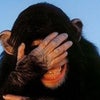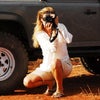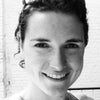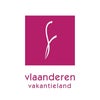The Royal Museum for Central Africa (RMCA) is an ethnographical and natural history museum in Tervuren, just outside Brussels, Belgium. It was first built to show off King Leopold II's Congo Free State for the 1897 World Exhibition. It focuses mainly on Congo, Belgium's former colony.
The sphere of influence however (especially regarding to biological research) extends to the whole Congo River basin, Middle Africa, East Africa and West Africa, but tries to integrate Africa as a whole. First purely intended as a colonial museum, after 1960 it became more focused on ethnography and anthropology. Like in most museums, there is a research department and a public exhibit department. Not all research is pertaining to Africa, for example the research on the archaeozoology of Sagalassos. Some researchers have strong ties with the Royal Belgian Institute of Natural Sciences.
After the Congo Free State was recognized by the Berlin Conference of 1884-1885, King Léopold II decided he had to show the potential of the country in an exhibition. Economic investors had to be attracted and the public had to know this faraway country better. After considering other places, the king decided to have the exhibition in his royal estate at Tervuren. When in 1897 the World Fair was held in Brussels, a colonial section was built in Tervuren: the Palace of the Colonies (although there was only the one colony). It was built by the Belgian architect Georges Hobé in Art Nouveau style, using Bilinga wood, an African tree. It displayed ethnographic objects, stuffed animals and in the "Hall of the Great Cultures" Congo's most important export products were displayed: coffee, cacao and tobacco. In the park, a copy of an African village was built, in which 60 Africans lived. The exposition was a huge success.
In 1898 the Palace of the Colonies became the Musée du Congo, and now the exhibits became permanent. It was then that the scientific research really took off. But due to the avid collecting of the scientists, the collection soon grew too large for the museum and enlargement was needed. Léopold II saw it big: he wanted not only an Africa Museum but also Chinese and Japanese pavilions, a congress centre, a World School and so forth. Tervuren became a rich suburb of Brussels. The new museum started construction in 1904 by the French architect Charles Girault in neoclassical "palace" architecture, reminiscent of Petit Palais, with large gardens extending into the Tervuren Forest, a part of the Sonian Forest. It was officially opened by King Albert I in 1910 and named The Museum of the Belgian Congo. In 1952 the adjective "Royal" was added. In 1957, for Expo '58, a large building was constructed to receive African personnel: the Centre d'Accueil du Personnel Africain (CAPA). In 1960 the museum had its name changed to The Royal Museum for Central Africa.
At present, the RMCA is struggling with modernisation. Some call it "a museum of a museum", as it shows how a museum looked like in the mid-twentieth century. For example, Expo '58 still showed a harmonious Belgian-Congolian relationship, while the country stood on the brink of independence. A more modern exhibition "The Memory of Congo" (February 4, 2005 - October 9, 2005), tried to tell the whole truth of what happened in the Congo Free State before it became Belgium's colony, a very sensitive subject in Belgium. It was put on after The Guardian reported in July 2002 that, after initial outrage by Belgian historians over King Leopold's Ghost by Hochschild, the state-funded museum would finance an investigation into Hochschild's allegations. The investigatory panel, headed by Professor Jean-Luc Vellut, reported its findings in 2004. The exhibit based on them was set up the following year.
Critical of the museum was Adam Hochschild again, author of King Leopold's Ghost, who wrote an article for New York Review of Books purporting to show 'distortions and evasions' in the special 2005 exhibition.
The herbarium collection of the Congo Museum was transferred to that of the National Botanic Garden of Belgium in 1934.
The scientific departments (together with the main collections) are housed in the Palace of the Colonies, the Stanley Pavilion and mainly in the CAPA building.
There are 4 departments:





